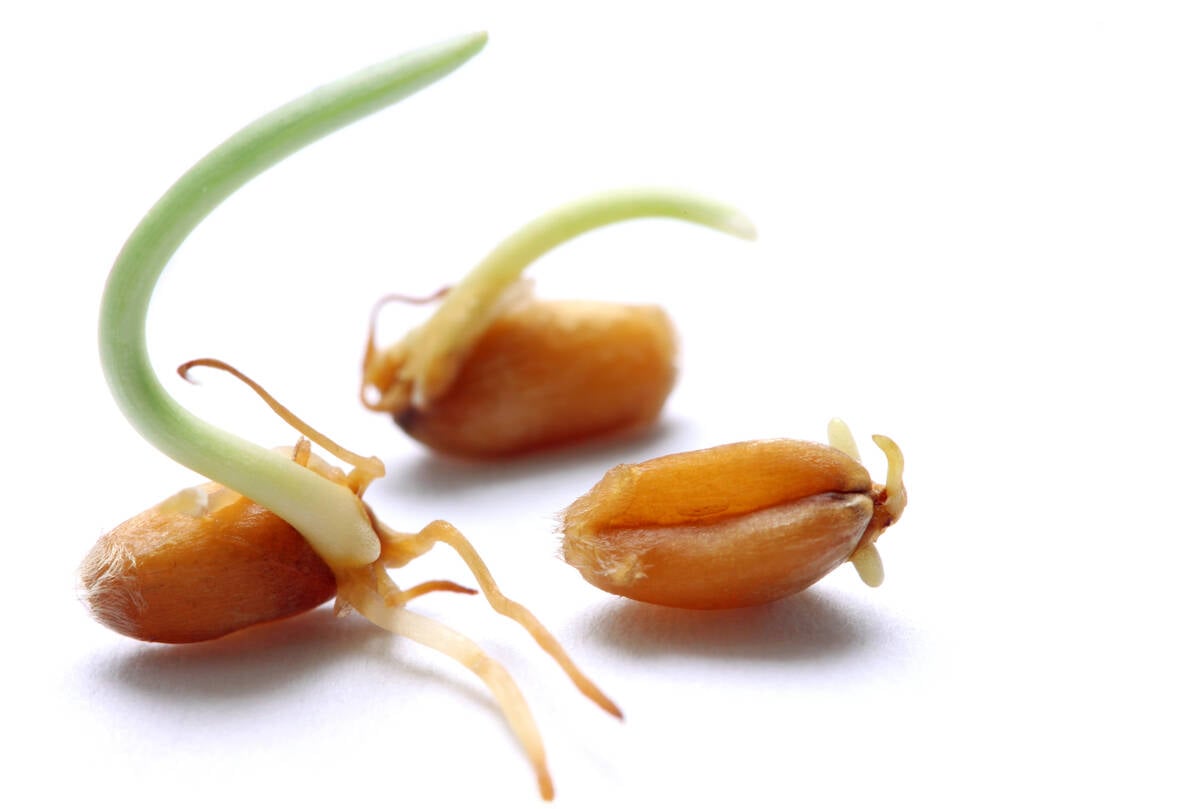Crop production worth $600 million a year in southern Alberta is reliant on one little insect: the bee.
The burgeoning hybrid seed canola business has kept Alberta beekeepers abuzz in recent years, helping them stabilize and expand their operations.
They and canola seed companies, which include some of the world’s largest agribusinesses such as Bayer CropScience, Monsanto and Pioneer Hybrid, want the relationship to continue.
They think it will, as long as the bees co-operate.
About 50,000 acres of hybrid canola seed are grown in Alberta, primarily in the irrigated south. Seed companies pay $100 to $200 per hive for pollination services provided by honeybees.
Read Also

Manitoba farmers fight sprouted wheat after rain
Rain in mid-September has led to wheat sprouting problems in some Manitoba farm fields.
Leafcutter bees are also used to pollinate canola, but they do not produce honey. Fees for leafcutter bees vary widely between seed companies.
“We have been fortunate as a seed industry to be able to have a supply of bees that have matched the growing industry that we have in hybrid canola,” said George Lammertsen, manager of canola seed production at Bayer CropScience.
“(Beekeepers) have been really quick to respond to challenges. I think we have the best managed bee operations in all of Canada and I would argue maybe even in all of North America.”
Lammertsen estimated that hybrid seed companies use 60,000 to 75,000 hives in southern Alberta.
A considerable number of them are owned by Jerry Poelman, a honey producer from Fort Macleod, Alta., who has 20,000 hives in various parts of the province, though not all of them are used in canola fields.
He and others are anxious to maintain hive health so they can meet the needs seed companies.
“We’ve had a great partnership with the seed companies. We can’t say enough how beneficial it’s been to us as beekeepers to have them on our side because we’ve been able to work together to grow our businesses far bigger than we ever could have imagined, to become a healthier, stronger bee industry,” said Poelman.
“We’ve developed a proactive attitude to try to continue to keep healthy, strong hives. We’ve raised the standard of bees and pollination from the time that we first started in the mid-’90s.”
Poelman said pollination services stabilize the industry.
Honey prices are also stable: $1.50 per pound in Canada and $1.60 to $1.70 in the United States.
However, Poelman showed no complacency about bees. He and other honey producers are now figuring out a plan to monitor and ensure bee health in the face of threats from varroa mites, nosema disease, viruses and potential threats from small hive beetle and varroa mite resistance to available miticides.
“We have a small part in the whole system, but it’s very essential. They need pollinators.”
Lammertsen agreed.
“Pollination is critical. It’s a significant part of the cost of production, and without a good supply of bees, we will not have a successful seed industry here in southern Alberta. That’s a fact.”















